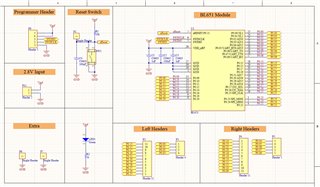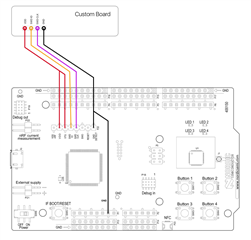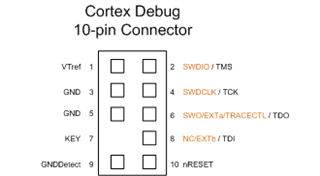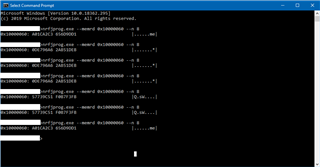Hi,
I have recently developed a simple custom board with the use of the BL651 module to have a dev board for myself. Although the schematic diagram is simple and the PCB does not have any issues of incorrect soldering, I was not able to detect the BL651 module over the nrf52 DK using either P20 or P19 headers.
I have already gone through most of the previous posts with issues of programming externally with the nrf52 DK and if the connections are correct between the 2 boards, but I was still not succesful in detecting the nrf52810 of the BL651.
As such I checked the signals from the SWD IO and SWD CLKfrom the nrf52 DK and was not able to detect any changes in the voltage levels using an oscilloscope. For reference, here is the schematic I designed maybe there is something I missed.
Note that this is m first time using the Nordic Enviroment, where I am using the Segger EMbedded Studio for development and the nRF Connect, nRF GO Studio and the nrfjprog commands to try and detect the custom device.
Do you have any suggestion as to why I am not able to detect the BL651 IC and why does the nRF52 DK does not output any signals on the SWD IO and SWD CLK, as I have been stuck on this problem for 2 weeks as of now.
Thank you.






